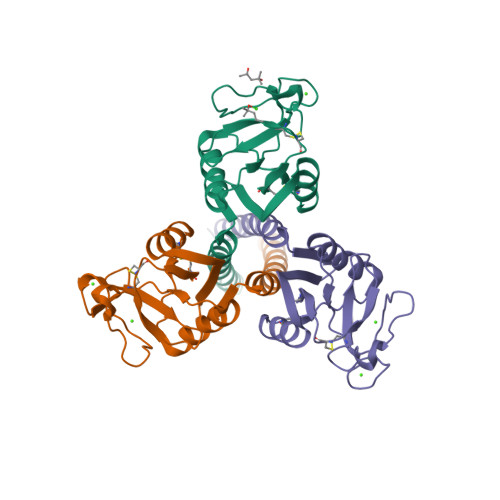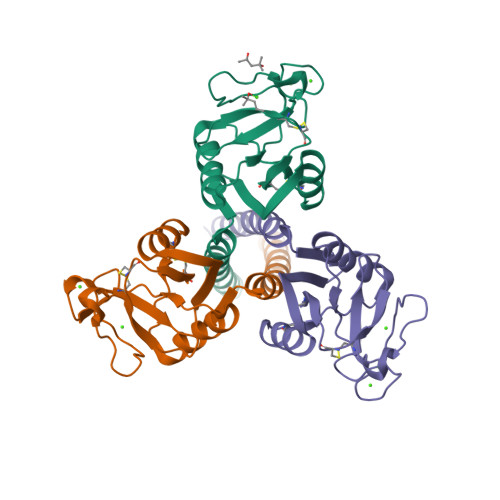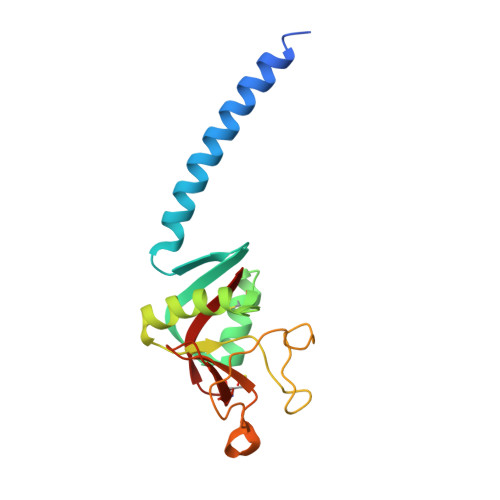Interaction of recombinant surfactant protein D with lipopolysaccharide: conformation and orientation of bound protein by IRRAS and simulations.
Wang, L., Brauner, J.W., Mao, G., Crouch, E., Seaton, B., Head, J., Smith, K., Flach, C.R., Mendelsohn, R.(2008) Biochemistry 47: 8103-8113
- PubMed: 18620419
- DOI: https://doi.org/10.1021/bi800626h
- Primary Citation of Related Structures:
3DBZ - PubMed Abstract:
Effective innate host defense requires early recognition of pathogens. Surfactant protein D (SP-D), shown to play a role in host defense, binds to the lipopolysaccharide (LPS) component of Gram-negative bacterial membranes. Binding takes place via the carbohydrate recognition domain (CRD) of SP-D. Recombinant trimeric neck+CRDs (NCRD) have proven valuable in biophysical studies of specific interactions. Although X-ray crystallography has provided atomic level information on NCRD binding to carbohydrates and other ligands, molecular level information about interactions between SP-D and biological ligands under physiologically relevant conditions is lacking. Infrared reflection-absorption spectroscopy (IRRAS) provides molecular structure information from films at the air/water interface where protein adsorption to LPS monolayers serves as a model for protein-lipid interaction. In the current studies, we examine the adsorption of NCRDs to Rd 1 LPS monolayers using surface pressure measurements and IRRAS. Measurements of surface pressure, Amide I band intensities, and LPS acyl chain conformational ordering, along with the introduction of EDTA, permit discrimination of Ca (2+)-mediated binding from nonspecific protein adsorption. The findings support the concept of specific binding between the CRD and heptoses in the core region of LPS. In addition, a novel simulation method that accurately predicts the IR Amide I contour from X-ray coordinates of NCRD SP-D is applied and coupled to quantitative IRRAS equations providing information on protein orientation. Marked differences in orientation are found when the NCRD binds to LPS compared to nonspecific adsorption. The geometry suggests that all three CRDs are simultaneously bound to LPS under conditions that support the Ca (2+)-mediated interaction.
Organizational Affiliation:
Department of Chemistry, Newark College of Arts and Science, Rutgers University, Newark, New Jersey 07102, USA.




















